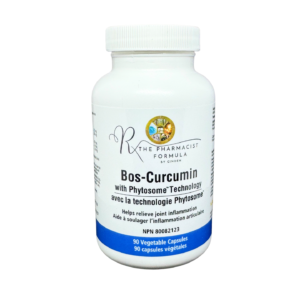Description
Discussion
Digestion Food must be broken down into its component parts in order to be absorbed into the bloodstream. Though
salivary secretions, chewing, gastric acid, and pepsin begin the process of digestion, the majority of digestion takes place
farther down the gastrointestinal tract in the small intestine. Once food leaves the stomach and enters the small intestine,
digestive enzymes begin the monumental task of turning it into the building blocks and fuel that the body needs for structural
support and metabolic processes. Digestive enzymes are produced primarily in the pancreas and brush border of the small
intestine, and the health and function of these organs is vital to effective digestion and absorption. Proteolytic enzymes,
amylases, and lipases are responsible for the digestion of proteins, carbohydrates, and fats. The complete digestion of
these macronutrients produces small peptides, amino acids, monosaccharides and disaccharides, and free fatty acids that
can easily pass through the intestinal microvilli and enter the bloodstream. Healthy digestion assures that incompletely
digested molecules and proteins don’t enter the bloodstream where they may be recognized as “foreign” by a vigilant
immune system.*[1,2]
Pancreatic and Intestinal Enzymes Pancreatic production of proteases, amylases, and lipases is complemented by
intestinal production of lactase, maltase, sucrase, enterokinase, and various peptidases, highlighting the importance of the
pancreas and the intestines in the digestive process. The enzyme lactase is required to break down lactose into glucose
and galactose before the intact lactose can draw excess water into the bowel, and before colonic bacteria can break it
down into volatile gases and acids. Though lactose (a disaccharide found only in mammals’ milk) is readily digested by
most infants, normal production decreases as a child is weaned onto whole foods and may eventually cease in adulthood.
Exogenous administration of lactase can support lactose digestion effectively and allow for continued consumption of milkbased
products.[3,4] Maintaining a healthy gastrointestinal flora helps support brush border function and digestive capacity
as well.*[5]
Digestion of Plant-Based Compounds – Digest contains several principle digestive enzymes as well as a
complement of enzymes designed to break down plant compounds and fibers that humans would otherwise be unable to
digest. Raffinose and melibiose, carbohydrates commonly found in legumes, can be broken down by the intestinal
enzyme alpha-galactosidase. In the absence of this enzyme, these carbohydrates pass into the large intestine, where
microbes can ferment them and produce volatile gases. Exogenous administration of alpha-galactosidase, present in
Digest, supports the digestion of these plant-based compounds and has been used safely and effectively.[6,7] Betaglucanase,
hemicellulase, pectinase, xylanase, and dipeptidyl peptidase (DPPIV) are also present and improve the
digestibility of plant-based foods by breaking down plant cell walls, fibers, and proteins. Phytase is present to facilitate the
breakdown of indigestible phytates from grains and seeds, and release phosphorus, calcium, inositol, and other nutrients
for absorption. Bromelain and papain offer additional support for protein digestion. The enzyme invertase catalyzes sugar
to glucose and fructose.*
Digest incorporates amylase, lipase, proteases, hemicellulase, bromelain, papain, lactase, DPPIV, and other key
digestive enzymes to provide a comprehensive formulation that functions in a wide pH range to support and facilitate
healthy digestion. It has been formulated to allow flexible dosing that can be adjusted for individual needs.*

References
1. Bland J, Liska D, Jones DS, et al. Clinical Nutrition A Functional Approach. 2nd ed. Gig Harbor, WA: The Institute for Functional Medicine.
2004.
2. Whitcomb DC, Lowe ME. Human pancreatic digestive enzymes. Dig Dis Sci. 2007 Jan;52(1):1-17. Review. [PMID: 17205399]
3. Sanders SW, Tolman KG, Reitberg DP. Effect of a single dose of lactase on symptoms and expired hydrogen after lactose challenge in
lactose-intolerant subjects. Clin Pharm. 1992 Jun;11(6):533-8. [PMID: 1534729]
4. Heyman MB; Committee on Nutrition. Lactose intolerance in infants, children, and adolescents. Pediatrics. 2006 Sep;118(3):1279-86.
Review. [PMID: 16951027]
5. Zaouche A, Loukil C, De Lagausie P, et al. Effects of oral Saccharomyces boulardii on bacterial overgrowth, translocation, and intestinal
adaptation after small-bowel resection in rats. Scand J Gastroenterol. 2000 Feb;35(2):160-5. [PMID: 10720113]
6. Di Stefano M, Miceli E, Gotti S, et al. The effect of oral alpha-galactosidase on intestinal gas production and gas-related symptoms. Dig Dis
Sci. 2007 Jan;52(1):78-83. [PMID: 17151807]
7. Ganiats TG, Norcross WA, Halverson AL, et al. Does Beano prevent gas? A double-blind crossover study of oral alpha-galactosidase to
treat dietary oligosaccharide intolerance. J Fam Pract. 1994 Nov;39(5):441-5. [PMID: 7964541]
Wheat, gluten, yeast, soy, animal or dairy products, fish, shellfish, peanuts, tree nuts, egg, ingredients derived from genetically
modified organisms (GMOs), artificial colors, or artificial sweeteners.
Maltodextrin (derived from corn) is used to standardize enzyme activity.
REV
Does Not Contain
Wheat, gluten, yeast, soy, animal or dairy products, fish, shellfish, peanuts, tree nuts, egg, ingredients derived from genetically
modified organisms (GMOs), artificial colors, or artificial sweeteners.
Maltodextrin (derived from corn) is used to standardize enzyme activity.






Reviews
There are no reviews yet.